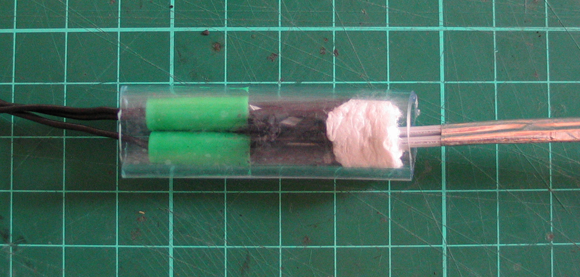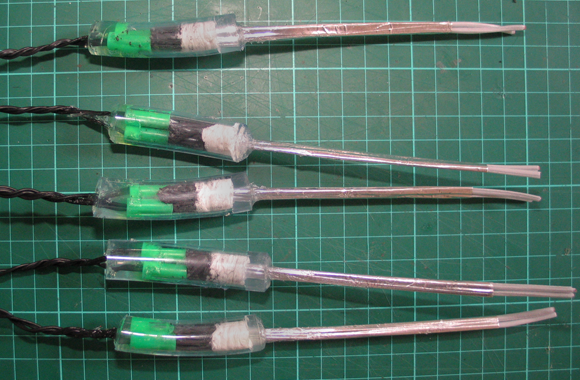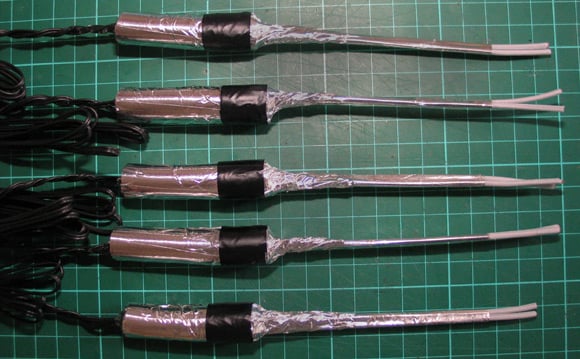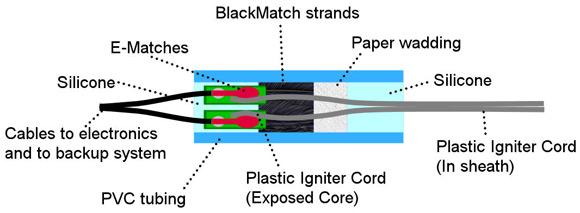This article is more than 1 year old
Heavenly SPEARS gives LOHAN a hot satisfying BANG
Fails to get CHAV off successfully, however
The Low Orbit Helium Assisted Navigator (LOHAN) team has been sifting the data from last weekend's successful test of the Special Project Electronic Altitude Release System (SPEARS) control board, and is delighted to report that it worked as advertised.
 SPEARS is designed to fire the igniter for our Vulture 2 spaceplane's rocket motor, and following a first flight last December, which ended in a rather bothersome encounter with the English Channel, we regrouped for a second pop at running SPEARS through its paces.
SPEARS is designed to fire the igniter for our Vulture 2 spaceplane's rocket motor, and following a first flight last December, which ended in a rather bothersome encounter with the English Channel, we regrouped for a second pop at running SPEARS through its paces.
Since the intention was to actually fire the igniter at an altitude of 30,500m (100,100ft), we thought it'd be a bit of a wheeze to use it as a pyro cut-down for an all-new paper aircraft, dubbed the "Covert High Altitude Vehicle" (CHAV):
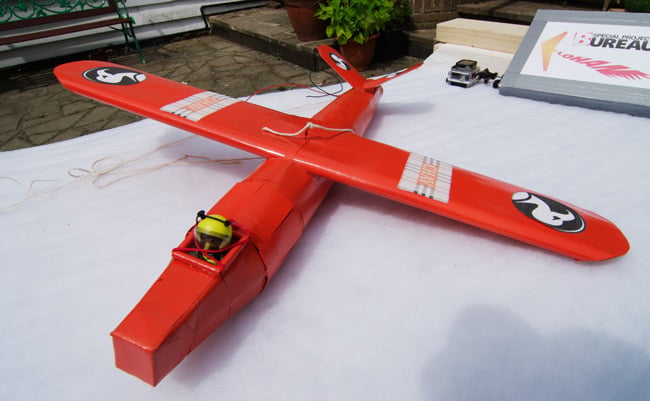
We'll bring you more in due course on how the CHAV launch didn't go exactly according to plan, resulting in our intrepid Playmonaut suspended under the payload in a white-knuckle stratodangle.*
Before Saturday's high-altitude jaunt, the entire LOHAN squad posed for a fetching group snap, and here we have (from L-R) rocket motor wrangler Paul Shackleton, custom igniter chap Rob Eastwood, apprentice boffin Katarina Haines Barbosa, lightweight tracker guru Anthony Stirk, SPEARS board creator Neil Barnes, hydrogen head honcho Dave "Pi In The Sky" Akerman and Paper Aircraft Released Into Space (PARIS) veteran John Oates:
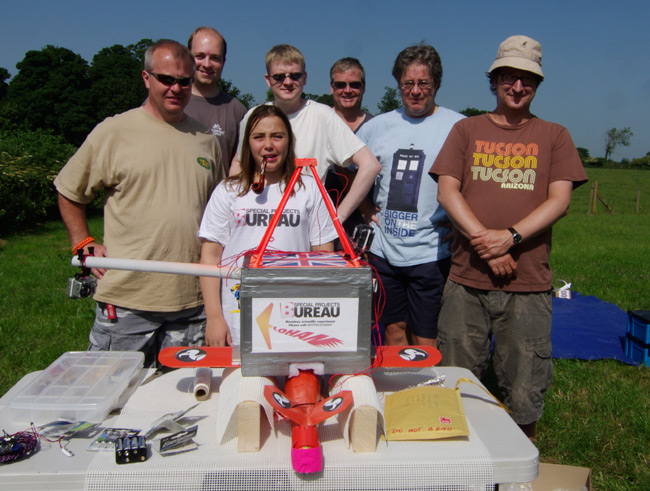
So, how does SPEARS work exactly? Well, here are the assembled bits and pieces, excluding the ATMega644 microprocessor and voltage regulator, which sit on the reverse side of the board:
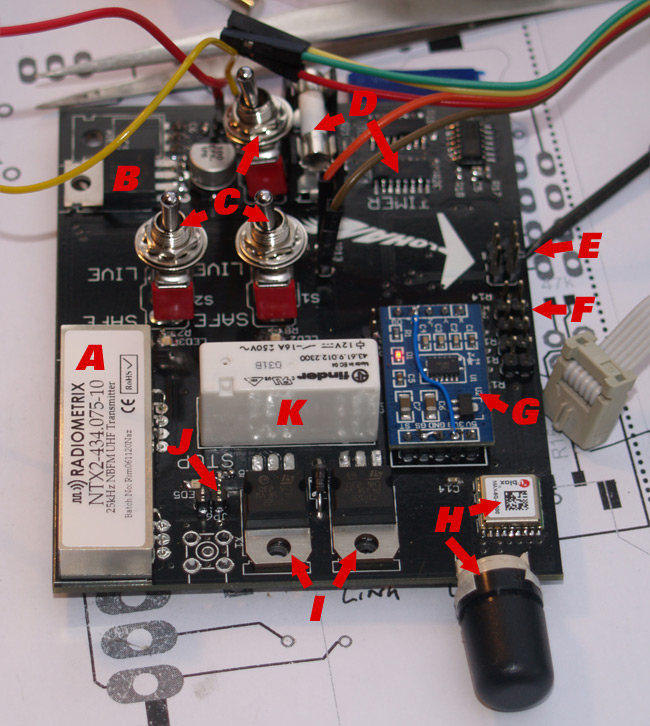
- A: Radiometrix NTX2 UHF transmitter
- B: Crowbar triac
- C: Ground safety switches and timer start switch
- D: Timer circuitry and fuse
- E: Programming connector
- F: Temperature sensing diode inputs
- G: 3-axis accelerometer
- H: uBlox MAX-6 GPS and Sarantel antenna
- I: Firing relay driver transistors
- J: Igniter connection contacts
- K: Firing relay
For the test, the board was programmed to trigger the firing relay at the aforementioned 30,500m (100,100ft), as detected by the uBlox MAX-6. This is done via the firing relay driver transistors, and 12 volts surge from the igniter battery pack to the Vulture 2 motor igniter.
SPEARS is also programmed to issue the launch command only if the current altitude is above 20,000 metres (to be clear of air traffic) and we achieve the desired launch height.
The board will, if required as a failsafe, also issue a "descent trigger command" at 500m below the maximum registered altitude. This is handy in the vent of premature balloon burst and we want the Vulture 2 to go no matter what.
Then, two-and-a-half hours after launch, SPEARS will completely disable the ignition system by shorting out the batteries. In the event the rocket motor doesn't fire, this prevents post-flight mishaps on the ground.
Finally, there are a set of safety switches for pre-launch arming, as Neil Barnes explains:
For launching we enable things a step at a time. If at any time, we don't see the lights we expect, and in particular if we see the 'STOP' light, we abort. We start with the power disconnected from the board and the igniter cable disconnected.
- Set all three switches off - this should give two yellow 'SAFE' lights. It disconnects power from both the relay coil and the relay contacts, and resets and stops the timer.
- Turn S1 on: this powers the coil side of the relay and sets its red 'LIVE' light.
- Turn S2 on: this powers the contact side of the relay, and sets its red 'LIVE' light. If there is a contact fault in the relay, this will light the 'STOP' light. That indicates that the igniter contact is live; it's a bad idea to attach the igniter at this point.
- If we're happy with just two red lights, we can attach the igniter.
- The final act, just before we launch, is to turn S3 on, which starts the timer - look for a flashing 'TIMER' light.
So, what about the igniter? Here's Rob Eastwood's initial concept diagram, followed by a sequence of construction photos. If you need clarification, roll over the pics for more info:

